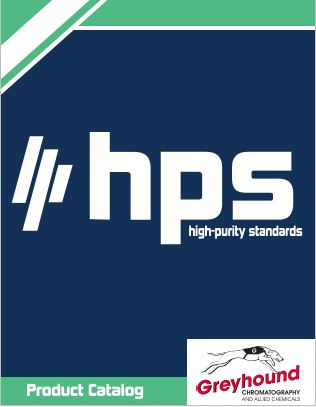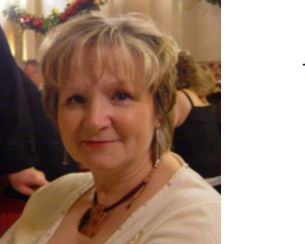Understand Tebuconazole’s effectiveness
![]()
Tebuconazole is a fungicide that is effective for a variety of landscaping and farming activities. It is especially popular for combating fungi that can harm grapes, cherries, almonds, cereals, and rapeseed or canola. Whether you are a researcher of fungi, an agricultural chemist or a farmer looking to eliminate new pests, learning more about tebuconazole can help you use the chemical compound more safely and effectively.
What is tebuconazole?
Tebuconazole uses a systematic action that can work to prevent and eradicate fungi. This chemical compound eliminates fungi by inhibiting their ability to spread spores, which slows growth.
Tebuconazole is in the chemical class azole and is written as alpha-[2-(4-chlorophenyl)ethyl]-alpha-(1,1-dimethylethyl)-1H-1,2,4-triazole-1-ethanol or C16H22ClN3O. Its commercial names include HWG 1608, Bay HWG 1680, Folicur, Raxil and Elite. It has been used across the U.S. and Europe since the early 1990s. Bayer Crop Sciences is a major producer of this fungicide.
Although approved for use by the U.S. and the European Union, some have criticized this chemical compound as dangerous to use on food crops. The U.S. Environmental Protection Agency established new regulations in 1999, and then reevaluated and ruled on tebuconazole in 2014. The newer ruling established regulations for use on oranges, and still approves the chemical for use on food products as long as it is used as directed.
In 2014, the European Food Safety Authority also examined this chemical compound. The commission used toxicology experts to examine data gathered from active tebuconazole use on crops. The report voiced "concern" for risk to consumers, wild non-target terrestrial vertebrates, wild non-target terrestrial invertebrates, aquatic life, on groundwater and long-term atmospheric transfers in assessments that have neither been finalized nor approved.
Fusarium head blight
Fusarium head blight or head scab is a condition that affects grains such as wheat. When plants develop this disease, farmers can expect much lower yields than normal. But the bigger concern is what causes the head blight. As Purdue University explained, this blight is caused by gibberella zeaem, a fungus that also produces mycotoxins, which can be toxic to humans. The University of Delaware's College of Agriculture and Natural Resources pointed to tebuconazole as an effective fungicide against Fusarium head blight and mycotoxins.
"Fungicide use is recommended as part of an IPM program to manage Fusarium head blight," the university explained. "Tebuconazole has been used in many states to suppress this disease since the 1990s. Currently, the most effective fungicides use metaconazole or a prothioconazole, or a combination of prothioconazole and tebuconazole. All of these fungicides belong to the DMI (group 3) class of fungicides."
Chem Service Certified Reference Standards are supplied by Greyhound Chromatography and Allied Chemicals, 6 Kelvin Park, Birkenhead, Merseyside, CH41 1LT. Email: info@greyhoundchrom.com
CONTACT US
Tel: +44 (0) 151 649 4000
Email: marketing@greyhoundchrom.com
FOLLOW US
YOU MAY ALSO BE INTERESTED IN OUR NEWSLETTER
About the Author
Susan Massie, Sales & Marketing Director, Greyhound Chromatography and Allied Chemicals Email: sue@greyhoundchrom.com
Susan Massie is the Sales & Marketing Director for Greyhound Chromatography and Allied Chemicals, affectionately known as 'Greyhound' in our scientific community. Greyhound was founded by Susan's husband Paul Massie more than 40 years ago, Susan hasn't been in the business for all of that time but has been involved with Greyhound for over 17 years. Greyhound continues to grow, expanding into new markets and taking on the challenges of our ever changing environment. It's heartwarming to witness the world waking up to the fact that we are damaging our planet on a daily basis. Every action we take has a direct effect on our planet and the world we leave behind for future generations. Susan is passionate about climate change and is happy to work in an industry that can have a direct effect on reducing the impact of our actions on the environment. All of the team at Greyhound take our responsibilities very seriously, the products that we supply are used by the world's leading scientists and chemists as they endeavour to monitor and repair the environment. All is not lost, if we all take responsibility for our actions, from reducing our waste and reusing or recycling our material collateral we can make a difference. The internet is full of useful advice and guidance, Susan is proud to contribute to that wealth of knowledge whenever she can.
Greyhound prides itself on personal service which provides prompt, efficient, cost-effective, safe delivery of all products. Greyhound provides technical advice and distribution of Certified Reference Standards and Materials, Laboratory Consumables, Solvents and Reagents across all scientific disciplines. Greyhound Chromatography offers over 1 Million products from its UK warehouse. The team at Greyhound are proud to support the work of the world's leading scientists and chemists as they challenge the abuse of our planet and try to make a difference to the world we leave behind for our ancestors.
You can view Susan's Linked In Profile here https://www.linkedin.com/in/susan-massie-79ab4121/


















